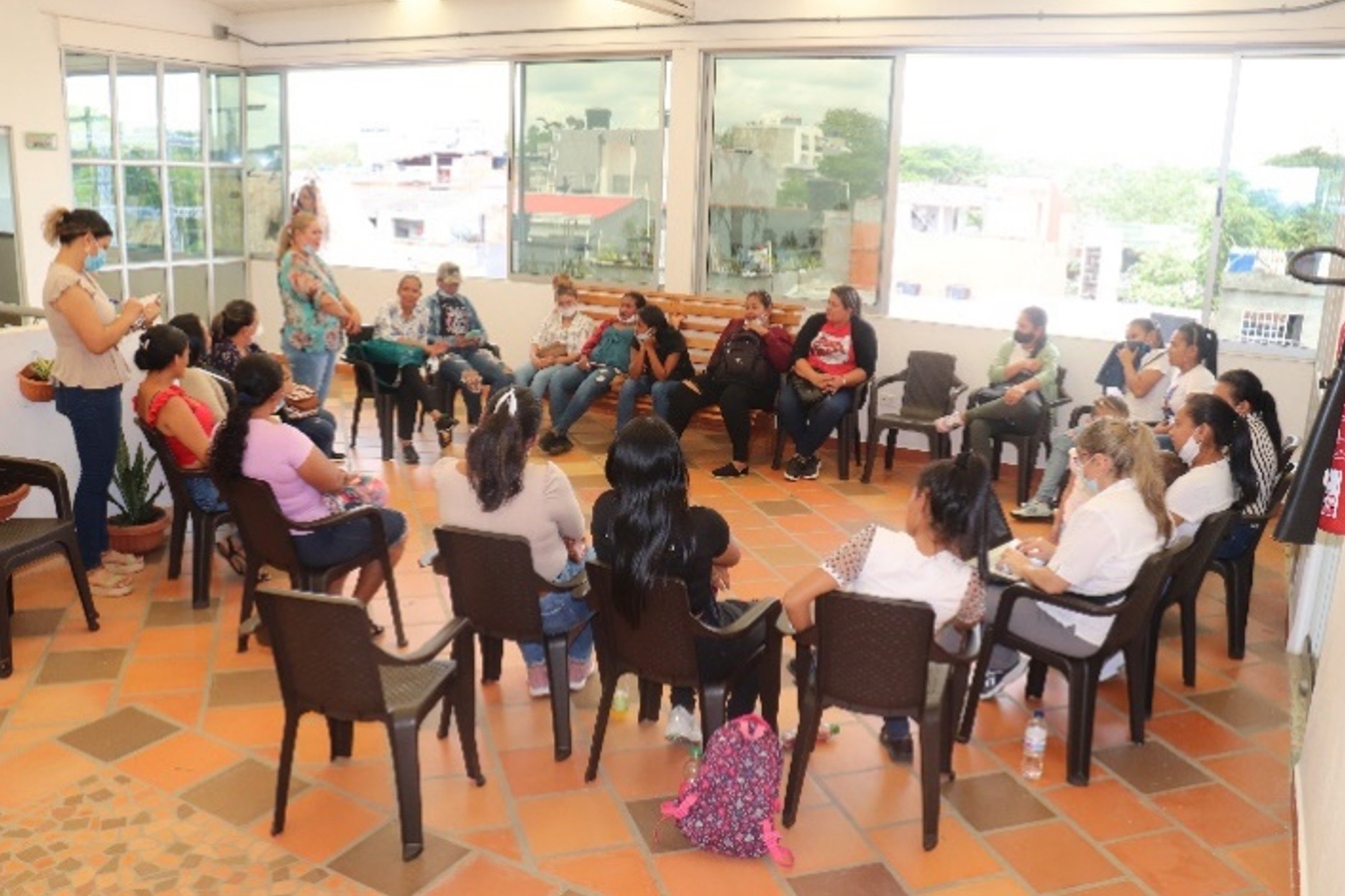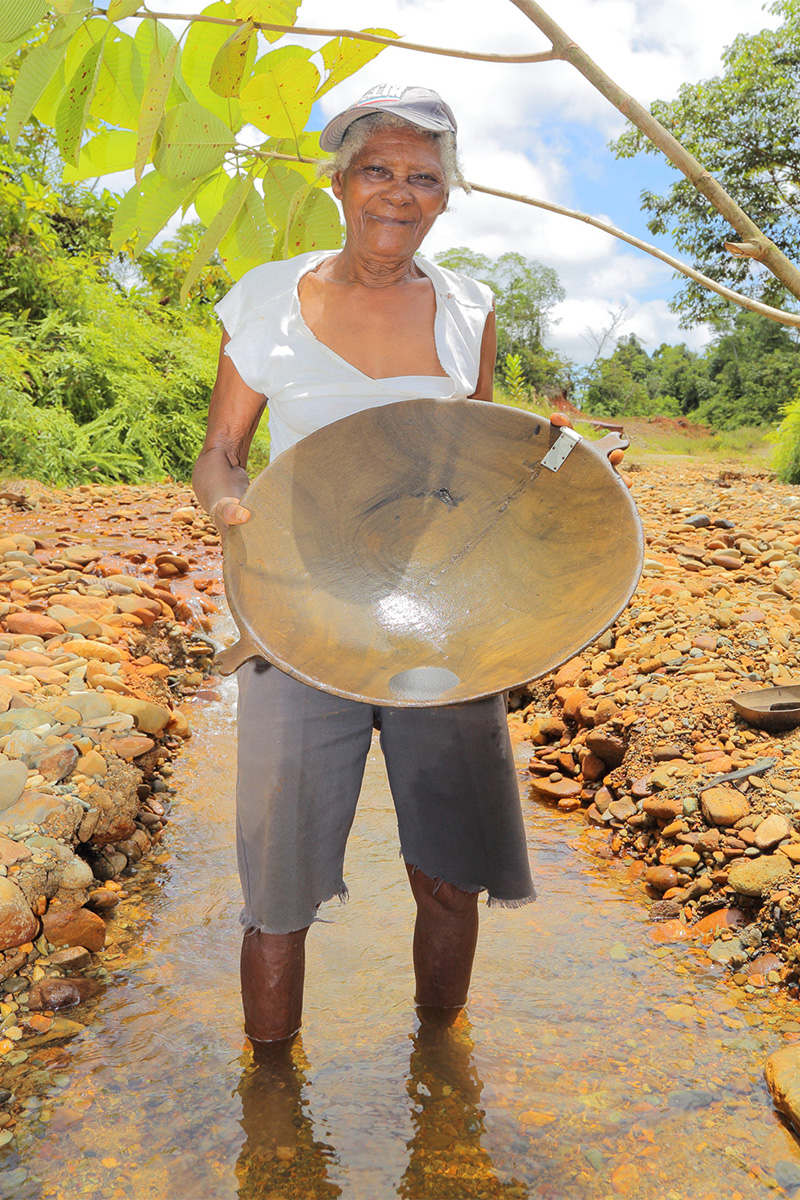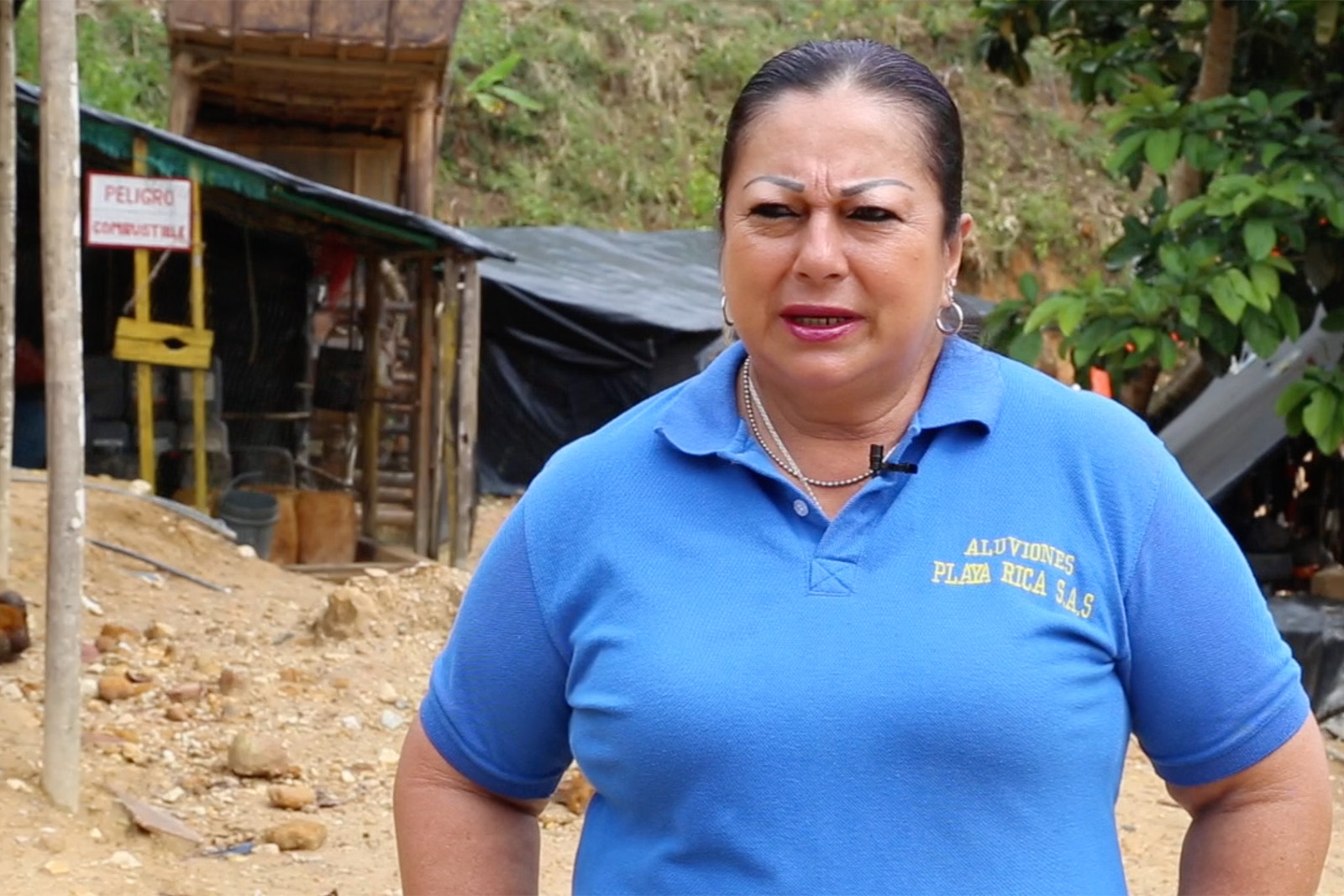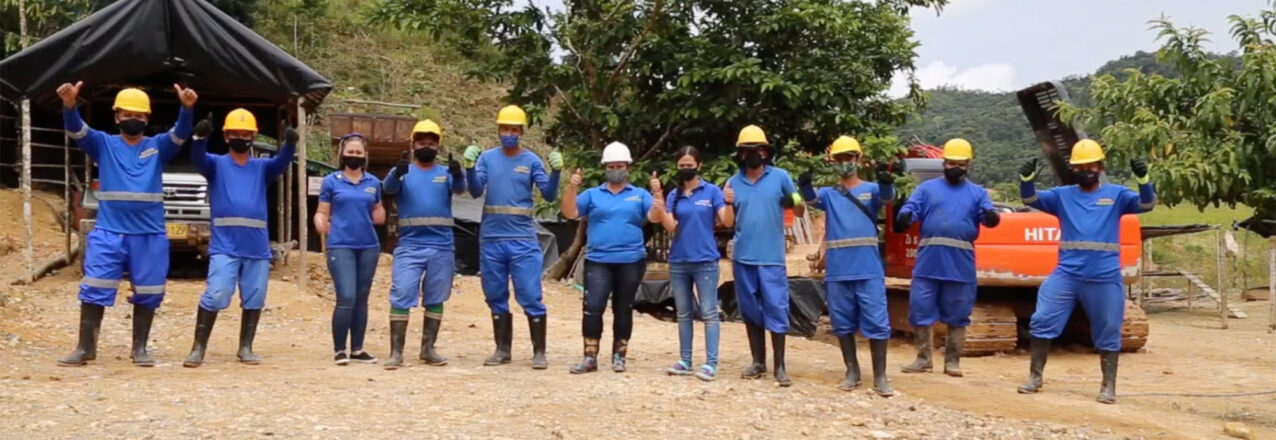By Smita Malpani, Rhiannon Gulick, Anthony Flowe, INRM
In Colombia, most artisanal miners who mine for gold in the informal sector are women. They work both as machadoras, who sift through mine tailings for gold, and barequas, who pan for gold in rivers. These types of artisanal mining are the least lucrative and most dangerous in Colombia.
The USAID-funded Mining Horizon project builds on previous USAID-supported work to strengthen governance in the mining sector and mitigate negative environmental impacts from gold mining. Because most miners in the informal sector are women, the project included and prioritized various gender activities that aimed to create a safe, equitable, and profitable future for women miners in Colombia.
Mining Horizon’s work on gender and mining has yielded important insights on gender and ASM gold mining in Colombia.
Women’s burden of work and lack of childcare have implications for formalization
To make up for limited income from artisanal mining, women often engage in multiple livelihood strategies, such as food preparation or other services near mining sites. They work double shifts to mine and then to do household and domestic work to care for their families. Men, due to social norms, do not have the same level of household and care duties. These multiple livelihood strategies add to women’s heavy burden of work.
Relatedly, Mining Horizon has found that a lack of child care limits women’s ability to become miners in the formal sector. Informal women miners who juggle work and care responsibilities often bring their children to mining sites and keep them in a makeshift enclosure to watch as they work However, government regulations for formal mining prohibit children from being at mining sites. Without child care, most women artisanal miners know they would not be able to comply with formal regulations for mining and do not see it as a viable option.
Mining Horizon’s experience shows that women’s care responsibilities and multiple livelihood strategies limit their ability to access higher and more stable income through formalization. Formalization, though it likely leads to higher and more stable income for miners, is a complicated and time-consuming process. Since women’s domestic responsibilities and heavy burdens of work constrain their time more than men, women may be less likely than men to attempt to achieve formalization.
To help address this challenge, future mining activities can explore multi-sectoral approaches including child care, women’s community-building efforts, and financial inclusion strategies such as village savings and loan associations (VSLAs). Future programs may also consider how to address women’s burden of work and the implications of that burden for formalization.


Persistent myths limit women’s access to mines, and the options left to them pose distinct health and safety challenges
In Chocó, Mining Horizon’s experience confirmed what has been reported in other parts of Colombia. Women are unable to gain access to mines because of persistent myths about gold veins and deposits disappearing if a menstruating woman enters a mine. Consequently, women are relegated to the outskirts of mines and left to sift through mine tailings and waste to search for gold. For access to mine tailings, women must negotiate with male mine owners, and they often face discrimination from the owners, who may set aside higher yielding tailings for men.
Mining Horizon found that women’s participation varied between artisanal and small-scale mining, posing distinct gendered challenges. For example, women make up most of artisanal miners, working as both machadoras and barequas. Although both machadoras and barequas face gender related challenges, those challenges are specific to the type of mining.
Machadoras must negotiate with male mine owners for access to tailings and might not have access to the most fruitful material. Women are less likely than men to be able to enter and work in mines due to social norms and persistent myths discussed above.
Barequas work in dangerous conditions, sometimes hip-deep in water while vulnerable to infectious disease, snakes, or other hazards. Barequas may also face specific health impacts from working in the water. For example, they may lack adequate menstrual hygiene options, and have reported vaginal infections and other negative health impacts incurred as a result of mining.
Future ASM programs may consider opportunities to document harmful myths about menstruation and mining to help dispel these myths. Furthermore, refining gender-disaggregated data collection to capture intersectional identities can also help tease out the challenges faced by specific populations.

Movement-building works to empower women
Although Mining Horizon did not work in areas where women’s mining associations had been formed, the project did work at the national level with women’s mining associations from other areas of Colombia. These associations, supported by the MIT-D Lab under the USAID Resilient, Inclusive and Sustainable Environments (RISE) Challenge, have empowered women to advocate for recognition and collectively address a range of issues from gender-based violence to environmental degradation.
To continue this momentum, future programming can build on USAID’s work supporting women’s associations. The upscaling of women’s mining associations and their federation nationally may help to amplify women’s efforts and empower them to advocate collectively.
Artisanal and small-scale mining in Colombia
Most mining in Colombia is artisanal and small-scale mining (ASM). ASM is informal mining conducted by individuals, groups, families, or cooperatives who use rudimentary processes to extract minerals or gems, often with no or very little mechanization — and it is an important part of livelihood strategies for the poor in some rural areas. Because ASM miners are concentrated in the unregulated, informal sector, lack of access to credit and appropriate technologies underlie mining practices that are detrimental to miners, local communities, and the environment. ASM techniques for gold are especially concerning because they often rely on mercury to extract ore from mine tailings and sediments. Mercury has documented negative health and environmental impacts.


